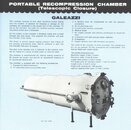I was asking whether a missed deco-stop or safety-stop, while being asymptomatic during the SI, was reason enough to terminate the next planned dive i.e. what are the risks involved?
Deco Stop = Yes. Tables procedures and computer lock-out exist to cover this scenario. Blown deco means 24-48 hours no diving, whilst monitoring for occurrence of DCS symptoms. Doing otherwise would mean that potential late onset of DCS symptoms would allow the diver to consider it safe to get back in the water, severely worsening their situation upon subsequent ascent.
Safety Stop = No. This isn't a mandatory stop, so missing it doesn't present an unacceptable risk of DCS. However, it is up to each individual diver to assess their personal risk factors and balance those against the level of safety and assuredness they wish to apply to their diving regards DCS.
Basically, If you miss a deco stop, you assume you might be bent unless proven otherwise (24-48hrs to confirm).
If you miss a safety stop, you assume you are ok, but make prudent decisions afterwards in case you got unlucky.
...why not try to descend, and spend some time at depth, in order to help avoid "the risk" of DCS....the diver is asymptomatic and is only worried about the probability of DCS....I just wanted to know if it could be done, and if so, why are they not attempted.
Recreational divers generally aren't trained to conduct decompression. They are trained to avoid it. If such a diver failed to avoid that situation in the first place, then it is doubtful that they had the skills and capability to attempt more complex 'missed decompression' procedures.
In addition to concerns over diver skill-set, capability and logistics for conducting missed deco procedures, there are also issues regarding the 'mechanics' of bubble formation that may not be addressed by swift re-descent. Issues such as
PFO complicate the matter even further.
Given the low risk presented by
marginally over-staying a recreational NDL, there would be few benefits to be gained from enacting a 'missed decompression' procedure. A better option would be to remain out of the water and monitor for symptoms. Immediate hydration can be a critical factor - and this cannot be achieved if the diver remains in the water.
If the diver did subsequently present symptoms, they can be more readily diagnosed out of the water and swift treatment provided.
Under such circumstances, it is more beneficial to provide the diver with 100% O2 and hydration at the surface, than for them to re-descend and complete minor deco. However, the same counter-argument exists that such treatment can serve to otherwise mask the presentation of symptoms and delay diagnosis and resolution through appropriate medical care.
Within the auspices of technical diving training, missed and omitted decompression procedures
are taught. This is because the levels of saturation are much higher, increasing the likelihood of a far more severe, life threatening, and
immediate presentation of DCS. In addition, it is assumed that technical divers completing missed decompression will have access to high % oxygen rich mixtures for that decompression.
Note: this is dealing with missed deco, not re-compression as a treatment for presented DCS.
Whilst rapid evacuation and hyperbaric treatment is still the primary goal, technical divers have to ensure their survival within the time-frame to reach that treatment - hence missed/omitted deco procedures. Recreational divers are not likely to encounter the need for such survival measures.






